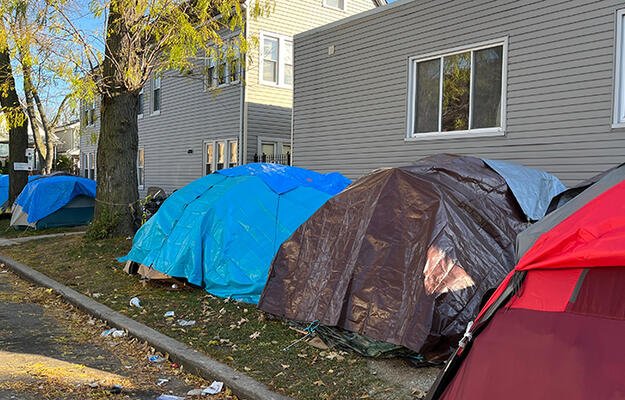
Common Hardships Serve as a Bond for Permanent Supportive Housing Residents
- Title:
- Common Hardships Serve as a Bond for Permanent Supportive Housing Residents
- Author:
-
Taylor Harris, Genevieve Dunton, Benjamin Henwood, Harmony Rhoades, Eric Rice, Suzanne Wenzel
- Source:
- Publication Date:
-
2019
For people who have chronically lacked a home, an effective intervention may include both stable housing and supports to overcome social marginalization or other factors that have contributed to or emerged from chronic homelessness. Permanent supportive housing (PSH) combines subsidized housing and related supports to foster resident stability. Evaluators often assess the success of a PSH program in part through measures of social integration. Social integration refers to one’s ability to participate in the social functions of life in one’s community, such as work, school, and routine interaction with other people. The number, diversity, and type of interactions with people can serve as a proxy for measuring social integration. However, social integration can be difficult for PSH to help its residents achieve.
This study is the first to compare multiple PSH housing models and neighborhoods with respect to the following social integration outcomes: social network size, social network diversity, emotional support, tangible support, and instrumental support. Social connections offer emotional support if participants say there are people they feel “emotionally close to most of the time,” tangible support if participants’ networks “had provided them with or assisted with getting money, clothes, food, or a place to stay,” and instrumental support if participants feel they “could go to [someone] for advice about a problem if they needed it.” The authors hope the insights will allow PSH providers and other decisionmakers to maximize social integration opportunities for people exiting homelessness.
The researchers used a previously established sample of 405 people who entered PSH in Los Angeles, California, between August 2014 and January 2016. The sample was constructed in partnership with 26 organizations that provide most of the PSH in Los Angeles County. To qualify for the study, residents had to be older than 39 years old, speak English or Spanish, be experiencing homelessness at the time of entry to PSH, and have no minor children. Residents moved into one of three types of PSH models: congregate (individual rooms with shared bathrooms and kitchens and some services on site), single site (efficiency-style apartment building with on-site access to supports and often health care), or scattered site (apartments in buildings not dedicated to PSH, with supports off site or delivered). The researchers analyze whether the type of housing model and/or neighborhoods (Skid Row, Downtown Los Angeles, or other) are associated with social integration and network measures.
Key findings
- Emotional support was significantly higher in single-site and congregate housing models when compared with residents in scattered-site housing. This is the only outcome with significant differences by housing model.
- PSH models may not affect the size or diversity of residents’ social networks. The study found no significant association.
- In Los Angeles, residents in Skid Row experienced higher rates of social support than those in Downtown Los Angeles or other neighborhoods.
- Black participants were more likely have a larger, more diverse, and more supportive network compared with participants of other races. The researchers posit this could reflect racially linked experience with structural inequity and systemic strain, which can foster social gathering and resource exchange patterns.
- Women in the study had smaller, less diverse social networks than men. This may reflect the high rates of trauma experienced by women who are homeless. A trauma-informed lens is important for both service providers and interpretation of research findings.
Policy implications
- Service providers can focus on specific resident subgroups who may have lessons for effective social support strategies or may need more support in social network cultivation and integration.
- The social network benefits for residents of Skid Row emerge from a community of people enduring similar hardships, according to prior research. The concentration can facilitate the development of coping mechanisms and increased well-being. Additionally, a cluster of service providers works in the neighborhood.
- Housing agencies can work to improve social support networks for residents outside of neighborhoods like Skid Row through interventions centered on family reunification, building social activities, and technology access for network members that are difficult to see in person.
- Using a scattered-site housing model to integrate formerly homeless people with the broader population did not improve social networks and support outcomes.
Photo by Astock Productions/Shutterstock


